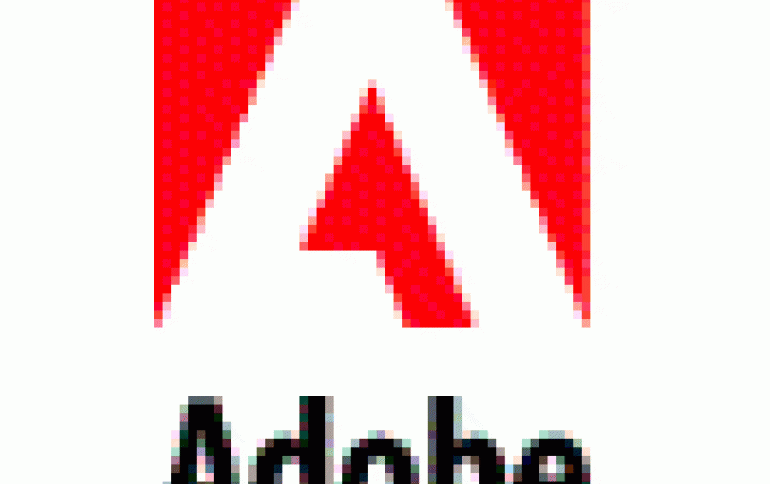
Adobe's New Tools Run Web Programs Offline
Adobe is releasing new design tools that further blur the divide between software that runs offline on computer desktops and programs that work on the Web, the company said on Sunday.
Adobe is allowing the newest generation of Internet software, nicknamed "Web 2.0," to run both online, in Web browsers, and offline, on desktop computers, without rewriting the code.
On Monday, the company is introducing a public test version of its software, code-named Apollo, that helps programmers to write advanced programs called Rich Internet Applications (RIA) for desktop computers, even when not connected to the Web.
Consumers stand to benefit from a more flexible generation of Web software that works both online and offline and comes from a wide range of independent software makers.
Especially data-intensive or multimedia applications stand to benefit in situations where local wireless connections fail, for example. These capabilities allow programmers to create simple-to-use "drag-and-drop" software that runs both online and offline.
Among the early customers is online auction giant eBay Inc. , which plans to announce this week at a conference in Boston that it is using the Apollo programming language to create notification services for its sellers to manage auctions outside of an Internet browser. Sellers also can upload photos or pricing data without constantly being connected to the Web.
Apollo, also called Adobe Integrated Runtime (AIR), which means independent software developers can build hybrid Web and desktop applications that run independent of Windows or Macintosh operating systems.
Apollo brings to desktop computer programs a way to build rich multimedia applications akin to how Adobe's widely used Flash programming language is used to create Web programs.
Microsoft offers a rival online/offline programming system, including its recently introduced Silverlight framework, which allows Flash-like Web programs to run on local computers.
New features in the test version of Adobe AIR include an embedded local database, the reading of Adobe Acrobat ".pdf" files, expanded JavaScript programming, and deeper integration with Adobe Flex, the company's Rich Internet Application software development system. AIR and Flex are due out commercially in the fourth quarter.
Key elements of Adobe AIR are open source -- meaning that developers are free to use and enhance the code in exchange for sharing any improvements -- including the local database that stores online data offline.
On Monday, the company is introducing a public test version of its software, code-named Apollo, that helps programmers to write advanced programs called Rich Internet Applications (RIA) for desktop computers, even when not connected to the Web.
Consumers stand to benefit from a more flexible generation of Web software that works both online and offline and comes from a wide range of independent software makers.
Especially data-intensive or multimedia applications stand to benefit in situations where local wireless connections fail, for example. These capabilities allow programmers to create simple-to-use "drag-and-drop" software that runs both online and offline.
Among the early customers is online auction giant eBay Inc. , which plans to announce this week at a conference in Boston that it is using the Apollo programming language to create notification services for its sellers to manage auctions outside of an Internet browser. Sellers also can upload photos or pricing data without constantly being connected to the Web.
Apollo, also called Adobe Integrated Runtime (AIR), which means independent software developers can build hybrid Web and desktop applications that run independent of Windows or Macintosh operating systems.
Apollo brings to desktop computer programs a way to build rich multimedia applications akin to how Adobe's widely used Flash programming language is used to create Web programs.
Microsoft offers a rival online/offline programming system, including its recently introduced Silverlight framework, which allows Flash-like Web programs to run on local computers.
New features in the test version of Adobe AIR include an embedded local database, the reading of Adobe Acrobat ".pdf" files, expanded JavaScript programming, and deeper integration with Adobe Flex, the company's Rich Internet Application software development system. AIR and Flex are due out commercially in the fourth quarter.
Key elements of Adobe AIR are open source -- meaning that developers are free to use and enhance the code in exchange for sharing any improvements -- including the local database that stores online data offline.





















